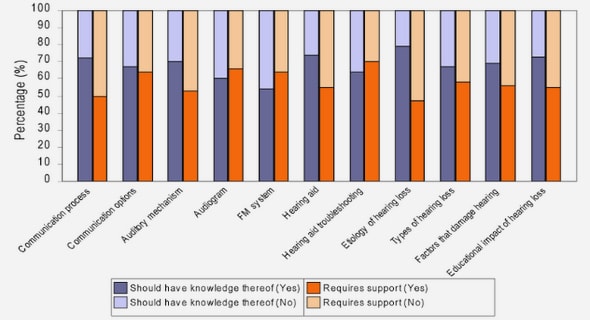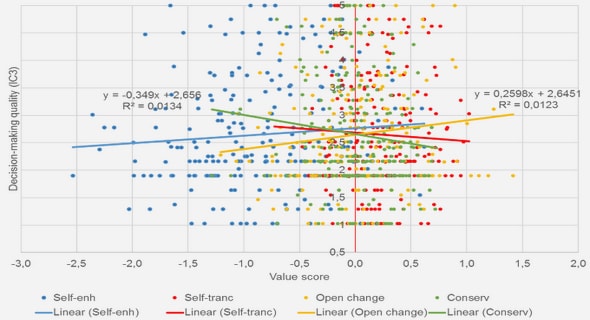Get Complete Project Material File(s) Now! »
Early OM diagenesis and formation of kerogen
After deposition, the OM is mainly composed of biomolecules inherited from living organisms such as lipids, proteins or carbohydrates. During the first few hundred meters of burial, these OM components endure a strong biogeochemical degradation through an intense bacterial activity (Tissot and Welte, 1984). Firstly, the biomolecules are degraded into monomers by bacteria (Tissot and Welte, 1984). This leads to the loss of chemical functional groups and results in a depletion of N, O and to the release of CO2, N2, H2S (Fig. 1.2). Biogenic methane is also generated by the intense bacterial activity. Then, the recondensation of these monomers leads to the formation of complex insoluble polymers resistant to degradation which become increasingly integrated to the sediment. These geopolymers form the kerogen.
The structure, the initial hydrogen content and thus the initial oil proneness of kerogen in mudstones strongly depend on the source of the OM. Hence, kerogen is generally classified into three types. This classification, based on H/C and O/C kerogen atomic ratios is generally plotted in a Van Krevelen diagram (Fig. 1.3, Tissot and Welte (1984). Type I kerogen is often associated to lacustrine environments. Oxygen-poor (O/C < 0.1), this type is the most hydrogen-rich type of kerogen (H/C >1.5). Composed of the accumulation of aliphatic membranes derived from some bacteria and algae (such as Botryococcus), this highly oil-prone kerogen type is however rare in source rocks (less than 3%). Type II kerogen contains relatively high amount of hydrogen (H/C =1-1.5) and relatively low content of oxygen (O/C =0.1-0.2). Often associated with marine environments, type II kerogen is mainly composed of phytoplanktonic materials reworked by bacterial activity and can sometimes contain a mix of spores, pollens, phytoplankton, land plant debris, bacterial, algal matter and land plant inputs. This is the major type of kerogen in source rocks. Type III kerogen is hydrogen-poor (H/C < 1.0) and oxygen-rich (O/C >0.2). This kerogen type is mainly composed of debris derived from land plants. This type of kerogen is not sufficiently rich in hydrogen to be oil-prone but can be gas-prone.
Influence of thermal maturity
In recent years, a special attention was paid to the effect of thermal maturity in the formation of OM-hosted pores in mudstones (Chalmers and Bustin, 2008; Loucks et al., 2009; Bernard et al., 2012a, b; Loucks et al., 2012; Curtis et al., 2012; Chen and Xiao, 2014; Ko et al., 2016). The increase in maturity with burial and kerogen thermal degradation is widely considered as the main factor controlling the development of pores in organic-rich source rocks (Chalmers and Bustin, 2008; Loucks et al., 2009; Bernard et al., 2012a, b; Curtis et al., 2012; Chen and Xiao, 2014; Yang et al., 2018). While the interparticle porosity has been thought to decrease with burial due to structural rearrangements under compaction and possible occlusion by entrapped bitumen (Loucks et al., 2009; Modica and Lapierre, 2012), the OM-hosted porosity generally increases with increasing depth (Bernard et al., 2012a; Curtis et al., 2012; Reed et al., 2014; Chen and Xiao, 2014; Ko et al., 2016; Han et al., 2017; Ko et al., 2018). While primary OM-hosted pores, likely inherited from the original organic material structure (e.g. structure of cellulose, lignaceous debris, spaces between adjacent cells of colonial algae etc.) are sometimes observed in low-mature kerogen (Pommer and Milliken, 2015; Löhr et al., 2015; Reed, 2017; Katz and Arango, 2018), pores are rarely observed in amorphous type II OM (Bernard et al., 2012a, b; Curtis et al., 2012; Kuila et al., 2014; Katz and Arango, 2018).
Influence of the organic matter composition
In addition to OM thermal degradation processes and organic-richness, many works show that the initial kerogen composition, controlled by dispositional conditions and early diagenetic processes, can also strongly influence the evolution of porosity (Loucks et al., 2012; Curtis et al., 2012; Fishman et al., 2012; Milliken et al., 2013; Cardott et al., 2015; Ko et al., 2016; Ko et al., 2017; Ko et al., 2018). Source rock kerogen can be composed of particles of various origins, with distinct morphologies, internal structure and chemical composition. This may influence the primary OM porosity but also, the timing and the ability of rock to generate oil, gas and solid bitumen during burial (Tissot and Welte, 1984). This may lead to variation in the character, the distribution and the timing at which pores are generated during maturation. For example, no OM-hosted pores development is generally observed for type III kerogen, but vitrinite often contain mesopores tied with the original vitrinite microstructure (Mastalerz et al., 2012; Zargari et al., 2015). For Löhr et al. (2015), the primary OM porosity inherited from biological structures may influence the development of secondary organic pores during thermal maturation, leading to inhomogeneity in the OM-hosted pore distribution at more elevated maturities. For them, this impact of the primary OM-hosted porosity is however restricted to the relatively low thermal maturation stages (Ro ≤ 1.50%); above, the porosity is rather controlled by the secondary OM porosity formed in pyrobitumen. Ko et al. (2018) showed that the different abundance of Tasmanites between the Eagle Ford and Barnett mudstones has an impact on the pore evolution models with increasing maturity. The results of Chen et al. (2015) indicate that different kerogen types exhibit different ability to develop pores during maturation. These authors suggest that type I kerogen has a greater potential to develop pores than type II or III kerogen. For them, OM type is thus a key factor for the development of the OM-hosted porosity. This is in accordance with the conclusion of which suggest that the initial OM oil and gas generation potential has a prime control on OM-hosted pores development. While the evolution of the bulk and the molecular composition of OM as a function of the OM origin and thermal maturity have been well documented (Tissot and Welte, 1984; Monthioux et al., 1985; Boreham et al., 1988; Radke, 1988; Behar et al., 1992; Landais et al., 1994; Peters et al., 2007), the influence of these evolutions on source rock porosity remains however, poorly understood.
OM composition and sedimentary cyclicities in the Yorkshire
Formed during pronounced sea-level and climate fluctuations at the Milankovitch-scale, KCF mudstones are locally internally marked by strong short-term cyclic variations in lithology, OM content and OM composition (Cox and Gallois, 1981; Oschmann, 1988). According to these variations, Oschmann (1988) has distinguished different organic cycles of several orders with duration ranging between on year (four-order cycles) to 3.107 years (first-order cycles). For this author, the first- and second-order cycles are tied with sea-level fluctuations while third-order cycles (5.103 to 15.103 years long) are controlled by climatic variations. These cyclicities were well-observed in the Yorkshire and the southern England (Cox and Gallois, 1981; Oschmann, 1988; Boussafir et al., 1995a; Lallier-Vergès et al., 1995). Dominated by a type II marine kerogen, previous SEM, TEM, bulk and molecular geochemical investigations have indeed, revealed that significant variations of TOC, OM composition and OM oil generation potential exist in the short-term cycle I and II of Marton and in the cycle III of Ebberston boreholes in the Yorkshire (UK, Fig. 2.1, 2.3, Herbin et al., 1991; Lallier-Vergès et al., 1995; Herbin et al., 1995; Boussafir and Lallier-Vergès, 1997). In this section, the OM is mainly composed of three distinct types of marine amorphous organic matter (AOM) (orange, brown and black AOM in order of decreasing abundance) with a minor contribution of structured constituents derived from plant tissues and zooplankton (Boussafir et al., 1995a; Boussafir et al., 1995b; Boussafir and Lallier-Vergès, 1997).
Mineralogy, organic matter composition and maturity
Previous studies reveal that the mineralogy of the Vaca Muerta source rocks exhibits significant variations depending on the basin location (Garcia et al., 2013). Generally, the most abundant components are quartz with contents ranging from 16 to 63 wt.%, and plagioclase (1 to 28 wt.%) (Garcia et al., 2013; Kietzmann et al., 2016). According to Kietzmann et al. (2016), the proportion of carbonates, inversely correlated to the content of quartz, fluctuates greatly over the formation from 0 to 51 wt.%. Higher clay minerals content is observed in the southwestern part of the basin, where it generally does not exceed ~30 wt.% (Garcia et al., 2013; Kietzmann et al., 2016). In the immature to low-mature samples, clays are dominated by mixed layer illite-smectite and smectite while the most mature rocks contain mainly chlorite, illite and mixed layer illite-smectite (Kugler, 1985). Vitrinite reflectance ranging from ≈0.6 to 2.0% (Legarreta and Villar, 2015). While immature to low-mature rocks are located along much of the eastern coast and on the Neuquén Dorsal, VMF rocks are gas-mature in the western and the central zone of the basin (Kugler, 1985; Legarreta and Villar, 2015). With TOC contents ranging from 3 to 12 wt.% and oil generation potential varying between 400 to 800 mgHC/g TOC, the VMF source rocks are characterized by high type II highly oil-prone OM contents (Mitchum and Uliana, 1985; Legarreta and Villar, 2011; Sylwan, 2014). As for the KCF, the kerogen of the VMF is mainly dominated by marine algal AOM associated with variable amounts of marine microplankton and structured terrestrial materials (Uliana et al., 1999; Legarreta and Villar, 2015). According to the same authors, the OM composition is not homogeneous in the VMF, and exhibits variations depending to the grade of oxygenation and the distance to the coast in relation to changes in eustasy (Uliana et al., 1999; Legarreta and Villar, 2015).
OM composition and sedimentary cyclicities in the VMF
As for the KCF, the VMF was formed during pronounced sea-level and climate fluctuations and are marked by strong short-term cyclic variations of composition. Kietzmann et al. (2011) show that the VMF exhibits significant cyclic variations of lithology characterized by a decimeter-scale rhythmic alternation of marls, shales and limestones. More recently, Monkenbusch et al. (2017) and Lejay et al. (2018) have demonstrated that these cyclic variations affect also the quantity and the quality of the OM deposited in the VMF. Monkenbusch et al. (2017) show that variations of the HI, the OI and the TOC (a definition of these parameters are available in chapter 3.1.4) are driven by the precession, the long and the short eccentricity. For these authors, climate and sea level variations, triggered by the evolution of these orbital parameters, have influenced the sea bottom water circulation, the stratification of the water column and the intakes of nutriments in the basin, modifying the amount, the composition and the quality of the preserved OM.
Samples description and selection
For this work, 12 samples were collected in the central basin from the Aguada Pichana x1001 borehole (APX) located in the thickest and deepest zone of the formation in the east of the fault system of Los Chihuidos (Fig. 2.4). The organic-rich facies are often associated with clay-rich mineralogies. In order to cover a wide range of relatively high OM contents, the studied samples were collected between 2647 and 2808 meters and selected in the clay-mineral-rich facies throughout the all thickness of the formation (Fig. 2.5). These mudstones are considered to reach the gas window with a vitrinite reflectance of ≈1.2% to 2.0% (Legarreta and Villar, 2011). In order to better understand the different parameters influencing the nature, the structure and the distribution of pores in gas-source rocks and especially the effect of the OM content and composition, this study aims firstly to compare the features of the porosity of natural low-mature rocks (the KCF mudstones) with gas-mature shales of equivalent original OM composition and contents. According to previous studies, the VMF and the KCF contain high contents of a similar highly oil-prone type II OM precursor deposited under comparable environments. Besides, the two formations are often considered as equivalent in terms of both OM composition and depositional environment (Uliana et al., 1999). These gas-mature samples from the VMF seem thus, to be the perfect candidates for our investigations.
Organic petrography, porosity and pore size distribution
Petrographic and Rock Eval analysis show that KCF samples from Marton and Ebberston consist of low-mature organic-rich argillaceous mudstones with a high potential for oil generation (HI≈500 mg HC/g TOC) while VMF samples consist of gas-mature siliceous mudstones mainly composed of a residual OM with a low residual petroleum potential (RC/TOC > 0.90, low HI values, Tab. 4.2, Fig. 4.1, 4.3). The Viking graben sample is a perfect equivalent (similar macerals, HI, S2, TOC) of the least organic-rich samples from Marton and Ebberston boreholes (TOC ≈2.0 wt.%) but with a slightly higher thermal maturity corresponding to the early oil generation. This substantiates the %Ro of ~1.65% determined by Legarreta and Villar (2011) in the VMF, the %Ro of ~0.50% obtained by Ramanampisoa and Disnar (1994) in KCF mudstones from Marton and Ebberston boreholes and the range of maturity reached by the KCF in the Viking graben (Rm ≈ 0.5-1.3%, Johnson et al., 2005). In KCF samples, the OM components identified in petrographic observations can be grouped into three classes according to their origin: (1) the brown AOM (diffuse OM) (Fig. 4.8, 4.7) which are derived from the selective preservation of resistant cell-walls of green microalgae and bacterial biomacromolecules (Largeau et al., 1984); (2) terrestrial particles including spores, woody and cuticular fragments and black AOM (Fig. 4.7, 4.8) derived from bacterial macromolecules mixed with altered lignaceous debris (Boussafir and Lallier-Vergès, 1997); (3) the orange AOM interpreted as bituminite macerals (Fig. 4.7, 4.8, (Boussafir et al., 1995b; Lallier-Vergès et al., 1995; Boussafir and Lallier-Vergès, 1997). Previous studies suggest that these macerals have high hydrocarbon potentials and nanoscopically amorphous and homogeneous ultrafine structures in TEM observations, and are derived from phytoplanktonic lipidic OM preserved by natural vulcanization (Ramanampisoa and Disnar, 1994; Boussafir et al., 1995b; Boussafir and Lallier-Vergès, 1997). In the KCF, periods of high productivity allow the metabolizable OM to enter the anoxic zone, favoring the development of sulphate-reducing organisms and thus the production of H2S (Lallier-Vergès et al., 1995; Boussafir and Lallier-Vergès, 1997). Most of this H2S diffuses from the sea sediments, while a part reacts with the reactive metals present in sediments to form sulphides (commonly pyrite). The excess of H2S is then in part incorporated as organosulfur compounds in the metabolizable OM by natural vulcanization to form bioresistant AOM known as orange AOM (Boussafir and Lallier-Vergès, 1997). These processes of natural sulfurization have allowed the preservation of a large amount of metabolizable OM explaining why all KCF mudstones are not close to the monolayer equivalent field in the TOC versus specific surface area diagram (Fig. 4.12). Furthermore, this also explains the strong association of these hydrogen-rich amorphous OM with pyrite (Fig. 4.7, 4.9) and the relative increase of the OM quality in terms of oil-proneness with increasing TOC (Tab. 4.2, Fig. 4.10).
Table of contents :
1. Scientific background
2. Geological settings
2.1. The Kimmeridge Clay formation (KCF)
2.1.1. Geological background
2.1.2. OM composition and sedimentary cyclicities in the Yorkshire
2.1.3. Samples description and selection
2.2. The Vaca Muerta Formation (VMF)
2.2.1. Geological background
2.2.2. Mineralogy, organic matter composition and maturity
2.2.3. OM composition and sedimentary cyclicities in the VMF
2.2.4. Samples description and selection
3. Analytical methods
3.1. Characterization of natural and thermally matured samples
3.1.1. Anhydrous confined thermal maturation
3.1.2. X-ray diffraction (XRD)
3.1.3. Petrography
3.1.4. Organic geochemistry
3.1.5. Porosity measurements
3.2. Characterization of isolated kerogen
3.2.1. Raman spectroscopy
3.2.2. Petrography
3.2.3. Small-Angle -X-ray scattering (SAXS)
4. Organic petrography and pore structure characterization of natural low-mature and gas-mature marine mudstones: insights into porosity controls in organic-rich source rocks.
4.1. Results
4.1.1. Mineralogy
4.1.2. Organic geochemistry
4.1.3. Petrographic observations
4.1.4. Porosity and pore size distribution
4.2. Discussion
4.2.1. Organic petrography, porosity and pore size distribution .
4.2.2. Thermal maturity involvement in OM-hosted pore genesis .
4.2.3. Secondary OM-hosted pores vs primary organic porosity
4.2.4. TOC and OM composition controls on pore genesis
5. Concomitant organic matter geochemical transformation and porosity development during confined thermal maturation: insights into the influence of organic matter composition on por
Abstract
Introduction
5.1. Results
5.1.1. Mineralogy
5.1.2. Petrography
5.1.3. Bulk and molecular OM geochemical characterization
5.1.4. Pore volume and pore size distribution
5.1. Discussion
5.1.1. Composition, porosity and maturity of the original OM precursor
5.1.2. OM thermal transformations during anhydrous confined thermal maturation
5.1.3. Thermal maturity and OM geochemical composition as controlling factor of KCF mudstones porosity
Summary and conclusions
6. Influence of thermal maturation on the structure of the isolated OM of organic-rich mudstones
6.1. Results
6.1.1. Elemental composition and Raman spectroscopy
6.1.2. SEM and TEM residual OM texture observations
6.1.3. SAXS measurements
6.2. Discussion
6.2.1. Assessment of thermal maturity and OM structure evolution during thermal maturation using Raman spectroscopy
6.2.2. Concomitant evolution of the texture, the structure and porosity of KCF isolated OM with increasing thermal maturity
Summary and conclusions
7. Does the duration of the confined thermal maturation experiments influence the evolution of the porosity of organic-rich source rocks?
7.1. Results
7.1.1. Evolution of bulk and molecular OM geochemical composition during 104 days of thermal maturation
5.1.2. Evolution of pore volume and surface area during 104 days of maturation and comparison with shorter duration experiments.
5.2. Discussion
5.2.1. How useful is it to combine different models for nitrogen adsorption measurements?
5.2.2. Effect of the duration of confined thermal maturation on OM thermal degradation
5.2.3. Does the duration of confined thermal maturation affect the evolution of porosity?
Summary and general discussion
Conclusions
References


